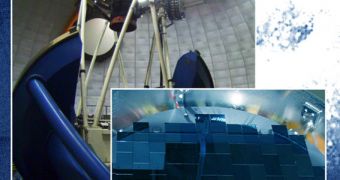Scientists at the US DOE Lawrence Berkeley National Laboratory (Berkeley Lab) are proud to announce that 62 charge-coupled devices (CCD) invented and developed by engineers and physicists at the organization have seen first light, as part of the Dark Energy Camera.
The purpose of the DECam, which is installed on Cerro Tololo Inter-American Observatory's Victor Blanco Telescope, is to collect images covering 4,000+ distant supernovae and 300 million galaxies, in order to provide a view of how the Universe is expanding.
This may help astrophysicists gain more insight into the nature of dark energy. Rather than searching for spectral details in the light it detects, the instrument measures the amount of light that the target objects release in various colors. DECam is a photometric imaging camera.
In about five years, after the camera finishes its survey, astronomers will use the data to compile the largest-ever 3D map of the Universe.

 14 DAY TRIAL //
14 DAY TRIAL //